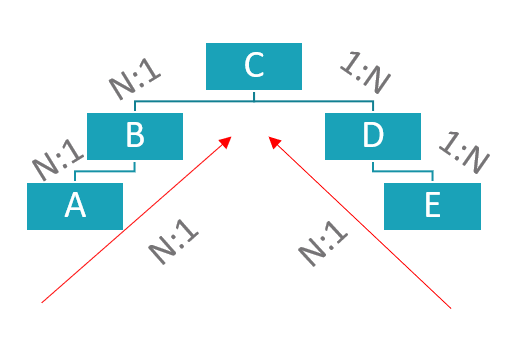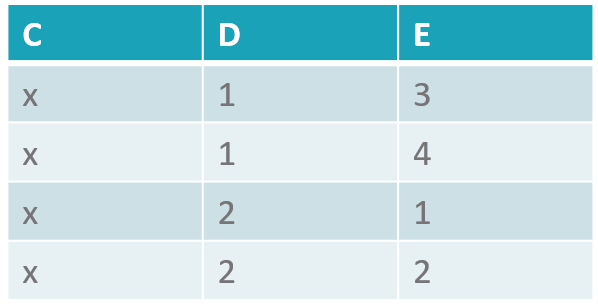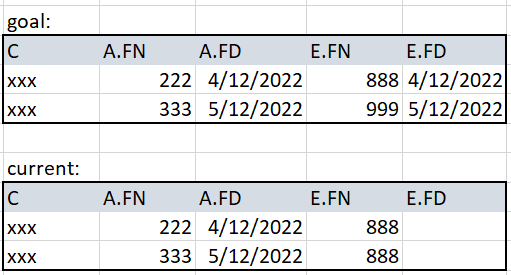I have tables A, B, C, D, E which are connected as on attached scheme. I want to create an OLAP table which shows A, C and E data. I already have one OLAP with A + C and second with C + E but when I try to have A + C + E I get an error message. It is possible to join these tables?
Question
Can I join tables which don't have connection?
Enter your E-mail address. We'll send you an e-mail with instructions to reset your password.






 What am I doing wrong?
What am I doing wrong? It makes sense that you can connect A&C and E&C separately. Namely, from A there is only one C that's possible and for E to C this is the same. However, what you are trying to do is to connect A to E.
It makes sense that you can connect A&C and E&C separately. Namely, from A there is only one C that's possible and for E to C this is the same. However, what you are trying to do is to connect A to E. 
 as you can see, E.FN returns the same value in both rows and E.FD is missing. E.FD is needed to determine E.FN. I tried to apply the below code, no success. Apparently I am making a mistake but I don't know how to fix it. Do you have any idea?
as you can see, E.FN returns the same value in both rows and E.FD is missing. E.FD is needed to determine E.FN. I tried to apply the below code, no success. Apparently I am making a mistake but I don't know how to fix it. Do you have any idea?